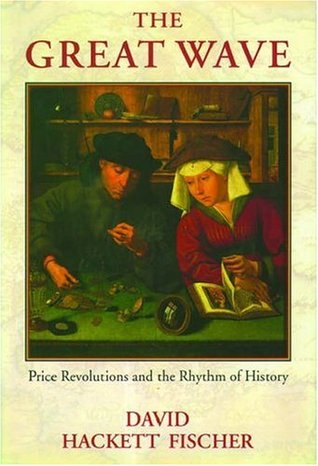More on this book
Kindle Notes & Highlights
Read between
February 7, 2021 - December 31, 2023
Another tool of economic management would be a standby system of price controls, carefully designed for limited, short-term use in periods of sudden price surge. It is often repeated that price-controls “don’t work.” This economic dogma is very much mistaken.
Enlightened tax policies might halt the shift toward regressive taxes that are now falling increasingly on the poor.
Their great leader Genghis Khan once remarked, “The greatest joy is to conquer one’s enemies, to pursue them, to seize their property, to see their daughters in tears, to ride their horses, to possess their daughters and wives.”
A Mongol minister named Bayan proposed to restore order by killing all people named Chang, Wang, Liu, Li and Chao—the most common names in China. This intended holocaust was beyond the capacity even of the Mongols, but large numbers were slaughtered.
The largest and most controversial literature is about Kondratieff cycles, which are sometimes mistakenly called long waves. They are thought to have caused major depressions every half century, circa 1815, 1870, 1929, and 1970.
Marxist critics, including Trotsky and many Old Bolsheviks, condemned Kondratieff cycles as an economic heresy. In 1930, Kondratieff was sent to Siberia, where he died in a Communist concentration camp.
The best introduction to a large literature is Joshua S. Goldstein, Long Cycles: Prosperity and War in the Modern Age (New Haven, 1988), a careful, honest and thought-provoking work which analyzes 33 attempts by various scholars to test the existence of the Kondratieff cycle, mostly with positive results.
The literature on Kondratieff’s long cycles, for all its abundance, has a shallow empirical base. Many historians continue to doubt the very existence of Kondratieff cycles.
Another weakness appeared in the 1970s when many Kondratieff-minded scholars predicted a “coming collapse of capitalism” that stubbornly refused to come, despite many dire warnings.
Kondratieff himself believed that his cycles did not occur before 1790.
My own judgment is that a cycle of approximately fifty or sixty years does in fact appear in many social indicators, and has been confirmed by various statistical methods including business cycle analysis, trend deviation, moving averages, and spectral analysis, to name but a few. But this pattern is not stronger than other cyclical rhythms, and it is much weaker than the secular trend with which it is sometimes confused.
Kitchin cycles or business cycles (3.5 years, or forty months) were first observed in the American economy during the nineteenth and twentieth centuries, and also in Europe during our own time. The classical text is Joseph Kitchin, “Cycles and Trends in Economic Factors,” Review of Economics and Statistics 5 (1923) 10–16. They are sometimes called “inventory cycles” and are thought to rise from the structure of modern business enterprise. But several historians have also reported them in price data as early as the fifteenth century, and Pierre Chaunu has discovered them in the rhythm of
...more
An example is an assertion by American economist Milton Friedman that inflation is “always and everywhere primarily a monetary phenomenon”
There is no necessary error in it. As long as it is confined within the constraining context of monetarist theory, Friedman’s statement is not merely true but tautological.


